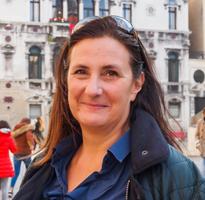Sweeping past lavender fields, the windows open, the wind in our hair, Provence very much lived up to its reputation as the most beautiful area of France. Every now and then a town could be seen on the horizon, perched delicately, sometimes precariously, on top of the hills of the Ventoux range; villagers in cafes and bars living out the painted scenes of Paul Cézanne.'The array of excellent countryside hotels in the Luberon region fully makes use of the natural surroundings. Most are away from towns and villages so driving is highly recommended and holidays with Kirker normally include a hire car. Crillon le Brave, my personal favourite, is a hamlet in itself, the owner having bought many of the local houses, most of which look out over the surrounding vineyards. They are now connected by discreet pathways, with terraces and small pools to take a dip on a summer’s day. It is the perfect getaway for cyclists, gastronomes and oenophiles, or anyone looking for a relaxing countryside retreat.''Beautiful scenery surrounds you in Provence, but for something completely unique, head to the Camargue - a coastal area between Marseilles and Nimes. Not only are there wild bulls and horses on the shores of the Mediterranean but also flocks of flamingos. Some areas are so remote they can only be reached by boat: this is one of Europe’s last genuine wilderness areas, but just an hour from a major city. The capital of the Camargue region is Arles, whose cobbled streets were home to Picasso, Van Gogh and Gauguin. The Grand Hotel Nord-Pinus hosted many of the 20th century’s famous artists and is a great base from which to explore the region. Alternatively, Le Mas de Peint is a 17th Century country estate outside the city, offering horse riding and jeep safaris for nature lovers.'From our arrival at Marseilles-Provence airport we had been made aware of the region’s current cultural focus, as Marseille and Aix-en-Provence were sharing the title of European Capitals of Culture. The renovations that have taken place in Marseilles as a result are wide-reaching and impressive. As reputations go, Marseille has not always been squeaky clean. The vieux port area has been restored to its former glory, with café terraces spilling into the street. And the people were friendly, helpful and had refreshingly little experience of the newly invigorated tourist trade in the city. The evening atmosphere is lively as locals and visitors sample the freshest fish, in the local speciality ‘bouillabaisse’, or with couscous and tabbouleh, the North African staples that reflect the origins of many Marseillais. All of the Kirker hotels in Marseille are in the old town area and it is always worth asking for a room overlooking the port. The city’s cultural history is celebrated in the new Museum of the Civilisations of Europe and the Mediterranean, with exhibits at 3 venues including the newly restored Fort St Jean and in the restored Musee des Beaux Arts.'Aix, Cézanne’s home town, is now the second city in the region, but tucked away 50 miles inland, it has a much more relaxed atmosphere. The bustling central market square, Cours Mirabeau, still hosts more locals buying their groceries than tourists buying lavender-scented soaps. The town has many excellent museums: the Granet museum in the centre of town has a collection of paintings from the old masters of Provence and most of western Europe, including eight recently acquired Cézanne originals. The master himself is celebrated at one of his original workshops, the Atelier Cézanne, a short drive up the hill above the town. On the way up to the Atelier we stopped in at the Villa Gallici, a patrician villa, 15 minutes’ walk from the Cours Mirabeau, which has been the town’s most refined hotel for many years and whose garden terrace is among the best dining spots in the region.'As well as British Airways flights to Marseille airport and no-frills flights into Avignon and Nimes, the Provence coast is reachable overland. Eurostar trains from London connect to the fast French TGV bringing you to the heart of Aix, Marseille or the old Papal capital of Avignon in less than 7 hours. The TGV also links Marseille to the glamour of the Cote d’Azur, starting with Nice just 2 ½ hours east making it very possible to combine the two regions in one holiday. The same combination is also possible using the easily negotiable motorways. Bear in mind though that the playgrounds of the rich and famous to the east work at Grand Prix speed while Provence’s pace of life is still more suited to the humble push bike.
Staff Review
Countryside & Culture in Provence
Speak to an expert - 020 7593 2288
Our expert reservations team regularly travel to a wide range of destinations to explore new cities, visit hotels and to research museums, galleries and restaurants so that we can offer the most up-to-date advice and recommendations.
Newsletter
Join our mailing list to receive the latest updates and travel inspiration.



























